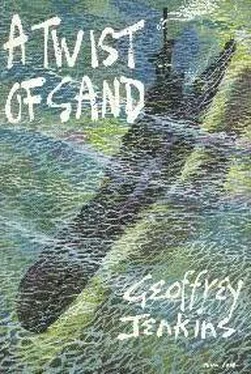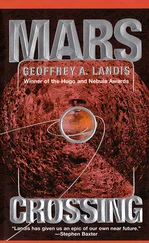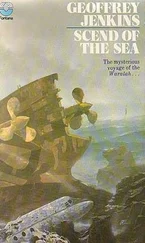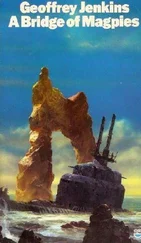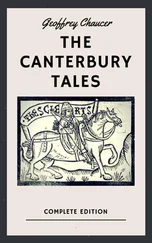Geoffrey Jenkins - A Twist Of Sand
Здесь есть возможность читать онлайн «Geoffrey Jenkins - A Twist Of Sand» весь текст электронной книги совершенно бесплатно (целиком полную версию без сокращений). В некоторых случаях можно слушать аудио, скачать через торрент в формате fb2 и присутствует краткое содержание. Жанр: Морские приключения, на английском языке. Описание произведения, (предисловие) а так же отзывы посетителей доступны на портале библиотеки ЛибКат.
- Название:A Twist Of Sand
- Автор:
- Жанр:
- Год:неизвестен
- ISBN:нет данных
- Рейтинг книги:5 / 5. Голосов: 1
-
Избранное:Добавить в избранное
- Отзывы:
-
Ваша оценка:
- 100
- 1
- 2
- 3
- 4
- 5
A Twist Of Sand: краткое содержание, описание и аннотация
Предлагаем к чтению аннотацию, описание, краткое содержание или предисловие (зависит от того, что написал сам автор книги «A Twist Of Sand»). Если вы не нашли необходимую информацию о книге — напишите в комментариях, мы постараемся отыскать её.
A Twist Of Sand — читать онлайн бесплатно полную книгу (весь текст) целиком
Ниже представлен текст книги, разбитый по страницам. Система сохранения места последней прочитанной страницы, позволяет с удобством читать онлайн бесплатно книгу «A Twist Of Sand», без необходимости каждый раз заново искать на чём Вы остановились. Поставьте закладку, и сможете в любой момент перейти на страницу, на которой закончили чтение.
Интервал:
Закладка:
Geoffrey Jenkins
A Twist Of Sand
I
Twenty-one and a half feet. I shivered.
The movement shook loose from the edge of my duffle-coat a bead of icy moisture which skidded down my cheek and splashed in a tiny bright spangle on the chart under the concentrated glare of the angled light. I shivered again, half in fear, half in discomfort. The fog was condensing everywhere, and I could feel its sharp tingle in my throat. Dawn in fog is the time for any skipper's fears; dawn in fog off the Skeleton Coast is the time of nightmares.
The drop of moisture made a north-westerly digression over the fold of the chart as Etosha rolled uneasily. Lying on it, the grey photostat page of the old log, with its neat, Victorian script, looked a little weary, despite its shiny rejuvenation at the magic wand of the camera which had plucked it from forgotten oblivion in a fusty London shipping office.
I slid the photostat of the ship's log under the 18-degree line of the chart as if, by placing it in the exact position where she had struck, I might gain some vital information from its meagre sentences.
"British steam vessel Clan Alpine. 13th January, 1890. Bound Tilbury to Cape Town. 5 a.m. Ship, drawing 2iњ feet, struck unknown object, thought to be a shoal, 18' 2" S, 11' 47" E. Position 326 degrees distant about 26 miles from Cape Frio. Doubtful. Making water in Number One hold but proceeding at reduced speed…" The one page of the Clan Alpine's log told all; it told enough; there was nothing later for my purposes.
Twenty-one and a half feet! Hell, that was little enough, and here I was with fully sixteen on Etosha's marks and in the same deadly shoal water. Three hundred and twenty-six degrees — that would put the shoal about three to five miles offshore. If that was right — I shook my head unconsciously — and another droplet splashed down in the fug of the chart-room, warm by comparison with the bone-chilling air of the bridge, where only a canvas dodger stood between me and the naked elements.
The old Clan Alpine log by itself would never do. I'd snap Etosha's back on the same shoal before I knew where I was if I stuck to it alone. The other logs — would they break open the Chinese puzzle? I reached for three other photostats lying on the top right-hand corner of the chart. The heading was uncovered. " Africa — South West Coast" said the writing. " Bahia dos Tigres to Walvis Bay." Who, I wondered vaguely, gave Tiger Bay that sonorous and Miltonic name? Some old Portuguese navigator? Christ! I thought, I'm just the same as one of those old seamen feeling his way down the same unmapped, uncharted coast ot South West Africa south of Angola, the only difference being that I'm using an echo-sounder in this year of grace 1959 instead of a lead-line, as in the year of Our Lord 1486. And mighty thankful I am to have a magnificent modern trawler under me with powerful engines instead of a caravel, unhandy and ungainly, under sail. A sailing ship would be tossing with sails slatting; at least I was holding Etosha under the barest steerage way as I probed into the unknown.
I spread the three other photostats out fanwise on the chart below the old Clan Alpine's log. Pratt at the Admiralty had really done a good job with the old logs. It was purely for old time's sake in the Navy, I knew. that. I certainly had no right to them, under my peculiar circumstances.
"H.M.S. Alecto, 1889," was written in Pratt's copperplate. I grinned to myself. It brought back memories of his meticulous attention to detail at Gib. during the war. " H.M.S. Mutine, 1911 " said the second photostat log heading. " H.M.S. Swallow, 1879," the third was titled. I knew their contents by heart — a five fathom shoal four miles off the coast, reported Alecto; a rock with breakers two and a half miles offshore, reported Mutine; eight fathoms, with breakers, three miles from the coast, reported Swallow. Swallow had added one bit of information. " sand and mud bottom." I grinned wryly. There was something to be said for using a lo-pound lead-line armed with a tallow bottom eighty years ago. It added one tiny little piece to the jigsaw.
I looked at the litter on the chart. By themselves, the inaccurate old logs were enough of a riddle, but the blasted German log threw the whole picture haywire. I wished now I had never dug around in the German archives in Winkhoek and never clapped eyes on or heard the name of the German warship Hyane. But I had, and here lay the salt-marked log just to prove that all my theories about the location of the shoal were wrong. I didn't have to consult it as it, too, lay on the chart…" Breakers during a moderate SSW gale and a high sea, in a position 282 degrees, distant 2 miles from high pointed hill." Two miles! I couldn't credit it. At that distance from the shore the Kaiser's old battle-wagon would have been a dead duck on the iron-hard sand of the shoal. And probably a rock or two through her armour-plating as well. The bearing, 282 degrees, was just about the craziest I had ever encountered.
I straightened up from the chart table. I was being mocked by the ghosts of ships which had long since gone to their graves. Their tall old-fashioned stacks and yardarmed masts seemed to cluster out of the fog round the modern, sharp lines of Etosha like a cerement ushering her to doom. All dead ships — and a shoal of death right under me now.
I shivered again. The dawn made it more morbid still. I looked down at the untidy chart table and cursed them all heartily. I needed fresh air. I cursed the bright light over the chart also: if it had been my old submarine, it would have been red, and I could have gone up on to the bridge without being blind for ten minutes before my eyes accustomed themselves to the blackness aloft.
It was just beginning to get light. The blackness was turning only slightly grey, but it was sufficient to catch a faint glimpse of sea. Jim, the Kroo boy, was at the wheel. The fog was so thick I could not see the top of the signal halliards, and the great beads of moisture, like sweat urged from a man in a fever, dripped thickly from the lower spokes of the wheel. It fretted in runnels uneasily down the canvas dodger. I glanced at the compass.
"Steer five-oh," I ordered, making a minute correction to the north-east.
Etosha was doing perhaps three knots: I must solve the riddle of the shoal this dawn, or I might not ever get the chance again. John Garland wouldn't always be asleep below as he was now and, as one of the finest navigators in the Royal Navy once, he'd smell a rat before long.
With that extra sense that comes when danger is near, I felt rather than heard the man in the chartroom.
I clattered down the companionway.
John stood examining the photostats and my own chart, with its countless annotations and figures.
We stood looking at one another across the baleful light of the angled lamp. He ran his eyes slowly over the photostats. His voice was hard, but laced with professional admiration when he spoke after a long scrutiny.
"That's a very fine chart, Geoffrey," he said. "For a coast which has never been mapped, or never been surveyed, I'd say, in fact, it was a masterpiece." He leaned over my soundings to the south-west of the Clan Alpine shoal. "A masterpiece," he repeated slowly, staring hard at me.
"Where are we now?" he went on in the same voice.
I jabbed a pencil at the five and three-quarter fathom mark. "About there. For what it is worth. It could be nine, or three fathoms."
He blenched. Off the Skeleton Coast a ship's position is every skipper's nightmare. It haunts his mind, waking and sleeping; drunk in a ditch ashore, it is his first waking question.
I had known in my heart of hearts that the showdown with John must come. I would have preferred to have chosen the moment. An icy dawn is not the best time for presenting a case, a shaky case at that, to someone who believes in you.
Читать дальшеИнтервал:
Закладка:
Похожие книги на «A Twist Of Sand»
Представляем Вашему вниманию похожие книги на «A Twist Of Sand» списком для выбора. Мы отобрали схожую по названию и смыслу литературу в надежде предоставить читателям больше вариантов отыскать новые, интересные, ещё непрочитанные произведения.
Обсуждение, отзывы о книге «A Twist Of Sand» и просто собственные мнения читателей. Оставьте ваши комментарии, напишите, что Вы думаете о произведении, его смысле или главных героях. Укажите что конкретно понравилось, а что нет, и почему Вы так считаете.
